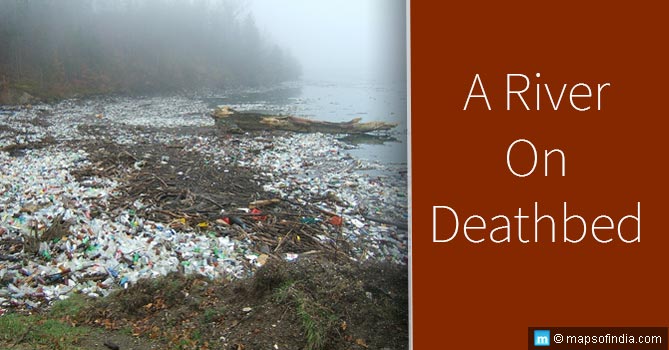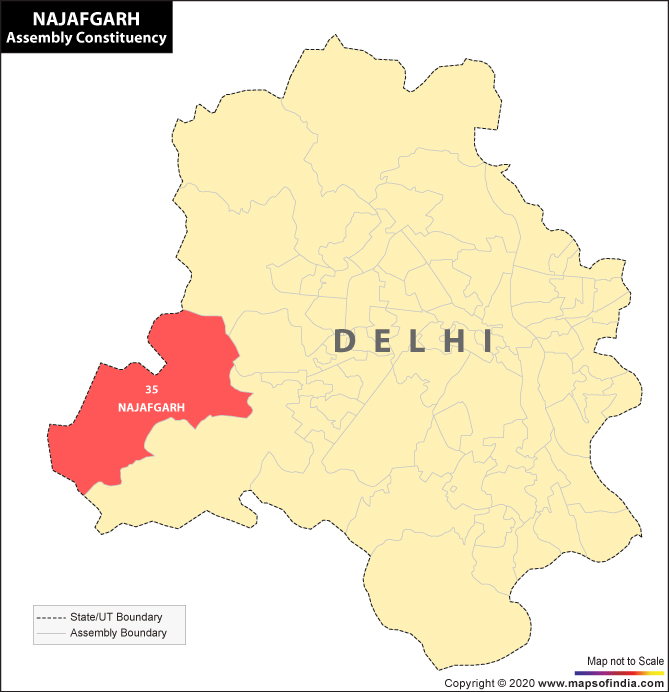River Yamuna or Jamuna Ji, as the river is known to millions of people who live on or near the banks of River Yamuna and its tributaries, is considered holy according to the Indian mythology, as the river acts as a lifeline for it’s population in the region.
The state of River Yamuna has been on the downward trajectory, as the river has become the second most polluted riverbed of the country. There are growing concerns amongst environmentalists and various stakeholders about whether the river Yamuna will become a mere drain instead of a river that can support the ecosystem in the region.
Problem of river pollution in India
River pollution in India is becoming a major environmental hazard, as most of the river in India are facing challenges of overpopulation, untreated or partially treated domestic and industrial waste-waters, and over-exploitation of the rivers has contributed majorly towards the large scale degradation of Indian river system.
Yamuna’s condition is the severest, as the river is on the verge of being biologically dead if stringent steps are not taken within due time. The state of Delhi is the major contributor to the increasing pollution levels in River Yamuna, followed by the Agra and Mathura respectively. The Delhi stretch of River Yamuna, i.e., approximately 22 Kms is the most polluted portion of the river and it has lot to do with the increasing encroachment on the banks of river Yamuna in Delhi, as overpopulation in Delhi has resulted in the establishment of slum clusters on the banks of Yamuna.
The condition of river is deteriorating at a brisk rate, with the aquatic ecosystem being the worst hit as the water pollution level in Yamuna river is increasing at an alarming rate, thus putting the whole ecosystem in danger of being damaged to an extent were it will become irreparable.
Ever since India ventured on the path of industrial development, the city of Delhi saw an influx of population migrating from their native place to Delhi seeking jobs and opportunities to improve their living conditions, thus creating stress on River Yamuna, as the river had to adapt to the changing demographic of the area, while also acted as a major source of water for daily requirements of the population.
The period of industrial development in India saw higher magnitude of damages being done to the River Yamuna, as the untreated or partially treated water domestic and industrial sewage water is drained out into the river. Thus, adding harmful pollutants and heavy metals like cadmium, nickel and lead which are scantily present in the river, while zinc and iron are generally present in the river.
A result the Biochemical Oxygen Demand(BOD) of Yamuna has increased at an alarming rate from 1980 to 2005, many ecologists suggest that river Yamuna is “ecologically dead” in the Delhi belt of the river. Signaling that pollutants and the low levels of Dissolved oxygen(DO) in the river has killed Yamuna as water of river Yamuna is no longer a safe place for breeding of aquatic life form in the 22 Km stretch.
The sewage of 21 drains from all over Delhi are released into the river, polluting the water in Yamuna that kills the necessary components required for maintaining aquatic ecosystem such as phytoplankton and zooplankton. Theses agents are no longer present in the water of river Yamuna in the Delhi belt, thus, no aquatic lifeforms can exist in the river.
Government’s role
In 1993, Government of India launched Yamuna Action Plan in collaboration with the Government of Japan which sanctioned a loan in 1990 to implement the first phase of Yamuna Action Plan. Phase I saw the government focusing on develop the infrastructure on the river banks and construction of pumping stations, STPs, low cost toilet complex, crematorium, and plantation along the banks of Yamuna.
The second phase of the Yamuna Action Plan started in 2004, saw work being done on 22 km Delhi stretch of the river and the Phase II of Yamuna Acton Plan was completed in 2008. Although the Government of India has invested heavily on Yamuna Action Plan since 1990s, but the situation of river Yamuna has gone onto deteriorate even further. While Prime Minister Narendra Modi has promised to work towards cleaning river Yamuna, as he plans to restore the purity of Yamuna and develop world-class river banks.
The Delhi government has also come up with a fresh plan to clean the river, by not allowing any sewage to flow into the river while suggesting to build a canal parallel to river Yamuna from Wazirabad to Okhla, so that the untreated sewage can be discharged into the canal instead of flowing into the river. The Delhi is planning to cooperate with Haryana government as the river requires fresh water to sustain its aquatic ecosystem and requires urgent release of water from the Hathnikund Barrage.
The plan forwarded by Delhi Government has received praise from the Central Government as the Modi Government is reviewing the possibilities of the plan and the investment requires to make this plan a success.
Role of Citizens
Citizens of the country play an important role in the development of the country to ensure a better and safe environment for not only the present generation but for the future generations, a future where the children can play and breathe in fresh air, a future with safe drinking water without paying for it, and a future where they don’t have to worry about catastrophic disasters.
Citizens play an active role in the functioning of democracy, as they can influence the policy-making decision of the government, while the government plays a role of implementing policies and make the citizens aware of their responsibilities in the successful implementation of the policy. People need to cooperate with the government and follow the guidelines of the government in order to have a clean and safe Yamuna.






